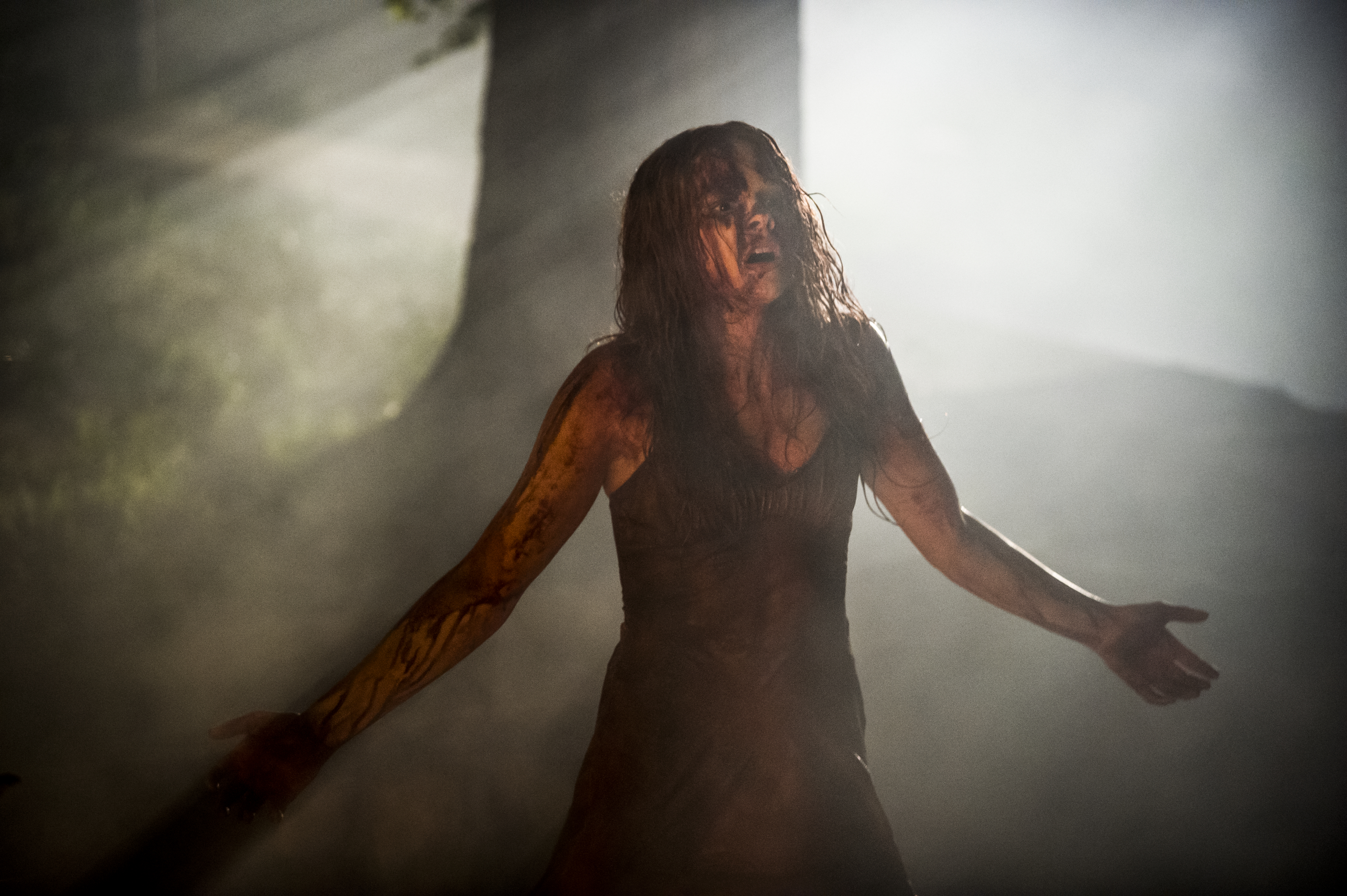JUST TRYING TO BELONG
by J. Scott Southworth
Watch it… if you have already seen the original Carrie and are seeking an adaptation with more violence and less vulnerability than the original adaptation.
Avoid it… and go watch Brian De Palma’s classic 1976 adaptation instead if you want a film that rises above its genre to provide a deeply affecting human story in between its episodes of shocking violence.
There are two types of horror films. There are those that treat themselves largely as genre exercises, offering levels of escalating violence throughout their duration as some sort of killer or monster reduces the number of the cast one by one. Halloween and Alien are examples of this type. But then there is another type, designed to deal with more subtle horrors that intrude into the otherwise normal lives of their characters. In this second type, the horror is often kept lingering beneath the surface for much of the film, sometimes to a point where someone walking in halfway through the movie might not notice immediately that they’re watching a horror film.
The original Carrie, written by Stephen King and directed by Brian De Palma in 1976, was a pioneer of this second type. It tells the story of a high-school girl named Carrie with telepathic powers who is bullied severely both by her classmates and her fanatically religious mother. A story like this could only end badly. But much De Palma’s film was spent establishing characters, detailing Carrie’s plight, and otherwise drawing viewers into the film. The effect was an almost hypnotic quality – a lullaby-like effect of drawing the audience in that only served to make the inevitable violence all the more devastating. The film went on to become a classic of the genre, standing together with Rosemary’s Baby and The Exorcist as one of the seminal horror works of an era.
The 2013 remake (or rather, as the filmmakers have described it, re-imagining of the original novel by Stephen King) hits most of the same points as De Palma’s adaptation. Similarities go beyond merely being adaptations of the same story – characters that were different between the original film and the novel frequently take after their film versions and some scenes between the two are shot with remarkably similar cinematography.
Differences are plentiful, however. The setting, of course, is updated to modern times, which is used to add a few creative elements to the plot – a viral video of Carrie that hits the internet is a particularly effective and creative touch. Additionally, a pregnancy subplot that was present in the novel but cut from the original film is restored, with little actual effect on the narrative.
Some of the changes were less than effective, however. The remake’s biggest weakness is in the portrayal of Carrie herself. In the original, Carrie remained innocent throughout the entire film, in part because she was so clearly psychologically broken and unable to defend herself. Even the destruction in the film’s final act seemed more like confused self-defense than active aggression. In the remake, Carrie (performed by Chloë Grace Moretz) is never so vulnerable. Part of the problem is the screenplay, which has Carrie argue with and stand up to her abusers for much of the film. Moretz’s performance doesn’t help matters – she portrays a Carrie who stands straight and speaks frankly; her vulnerability, when portrayed, never seems complete or sincere. This becomes problematic in the later scenes, when her strong-will throughout the film changes from scenes of inevitable disaster to scenes of grisly murder. This is one of those instances where the change of a single character is enough to change the film entirely.
The soundtrack, by Marco Beltrami, is also less than effective, utilizing echo-effects, contradictory notes and eerie melodies to provide a sense of unease where it is least needed. Whereas the original adaptation attempted to lure viewers into a state of ease and involvement, the remake seems intent on doing the exact opposite, seeming to say that “sure, we might be focusing on our characters and their lives right now, but don’t get too involved – this is a “horror” film, and don’t you forget it!”
There is still a certain power to the narrative, despite these flaws. During individual scenes, when the soundtrack was less noisy and the characters were all at their best, I felt drawn into the story in a way similar to the original. But such moments were never lasting and combined with an ending that is no longer satisfying, I’m left unsure who to recommend the new Carrie to. Fans of the original film will be disappointed by its lack of loyalty to the original’s themes. Horror fans will find far too little in the way of shocks or violence for their tastes. There’s not a whole lot to hate in 2013’s Carrie, but there’s not much to recommend, either.


